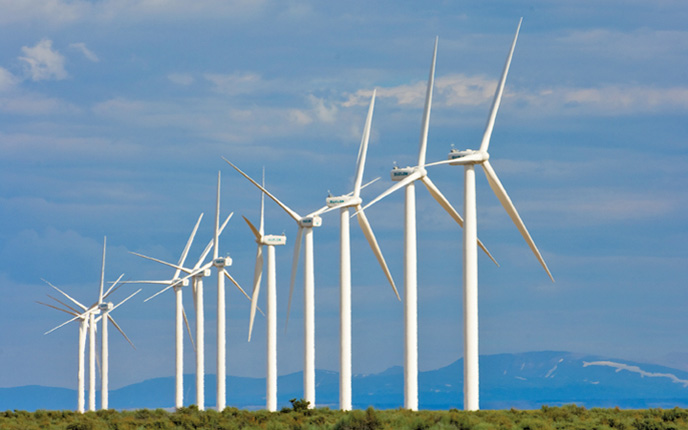 Wyoming is pretty much the Saudi Arabia of wind. In fact, Wyoming wind farms are starting to get so cheap that they can out-compete solar, gas and coal, even without subsidies.
Wyoming is pretty much the Saudi Arabia of wind. In fact, Wyoming wind farms are starting to get so cheap that they can out-compete solar, gas and coal, even without subsidies.
The financial firm Lazard released its most recent Levelized Cost of Energy Analysis, an annual report of different energy sources and their costs, which shows this progress in hard numbers. It documents that new wind power costs between $30 and $60 dollars per megawatt hour in levelized costs. And with the federal tax subsidy included, the cost of new wind falls to between $14 and $52 (Wyoming does even better than most places on cost because the state is just so windy next to the Rocky Mountains).
By comparison, coal had a higher cost of between $60 and $143 per megawatt hour, while a combined cycle natural gas plant’s cost was between $42 and $78 per megawatt hour, cheaper than coal but not as cheap as wind. Nuclear was way high, between $112 and $183.
The result of these numbers is a booming wind industry in the Cowboy State, as Heather Richards of the Casper Star-Tribune reports:
Developers Power Company of Wyoming and Viridis Eolia both have significant wind projects proposed in the state. Power Company’s Chokecherry Sierra Madre wind farm is under construction for the first phase of a 1,000 turbine farm near Rawlins. And Rocky Mountain Power, the state’s largest utility, would like to repower their entire wind fleet in the state, as well as bring 1,100 new megawatts online.
But the coal industry is not happy about it. The state’s coal sector is still the largest in the country, despite this new competition, and it’s facing considerable pressure from cheaper fuel sources both traditional and renewable. The industry hates the federal tax credit for wind and even got the state to levy a separate tax on wind production.
But with costs continuing to fall, plus the prospect of Wyoming serving out-of-state renewables market in places like California (should California successfully regionalize its grid), the coal industry’s fate will be unavoidable. In the long term, that’s not only good for air quality and stabilizing the Earth’s climate, it will also diminish the political power of the industry to try to hurt clean energy through bad tax policy, whether at the state or federal level.


